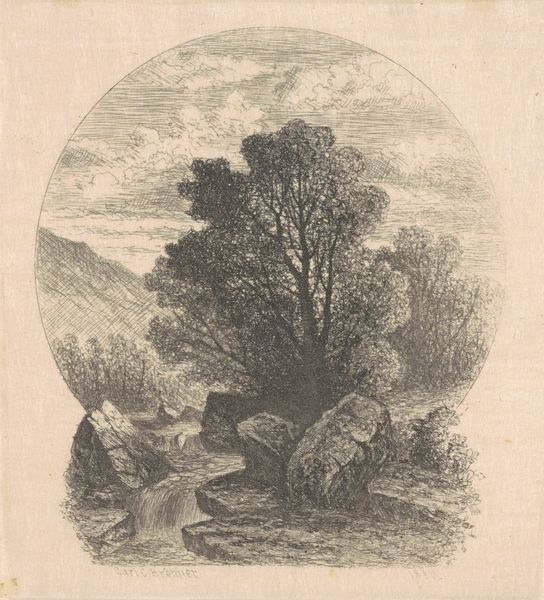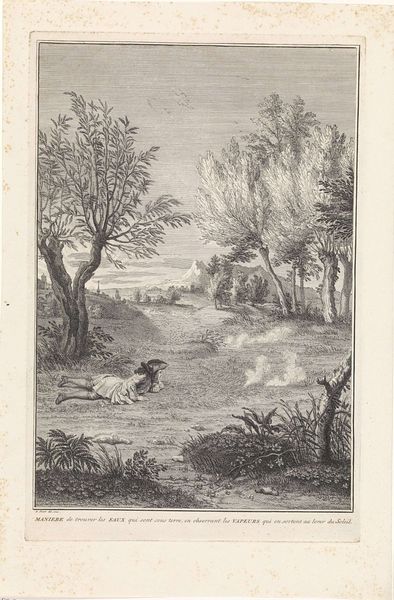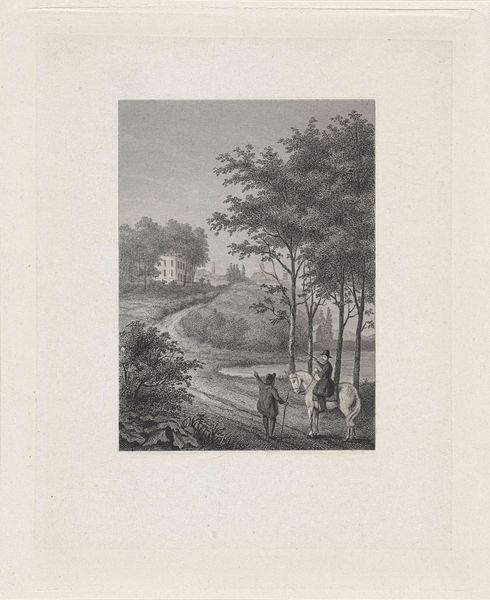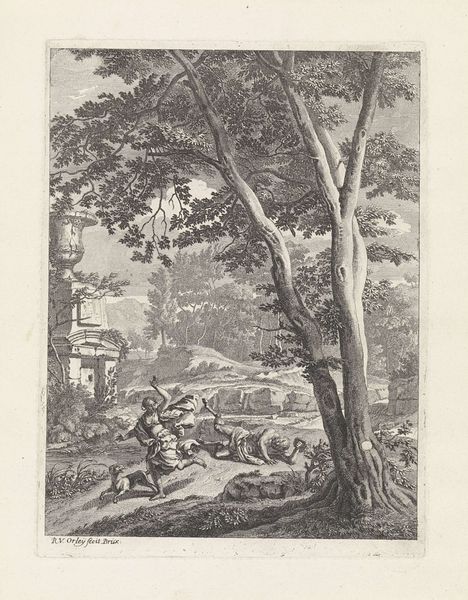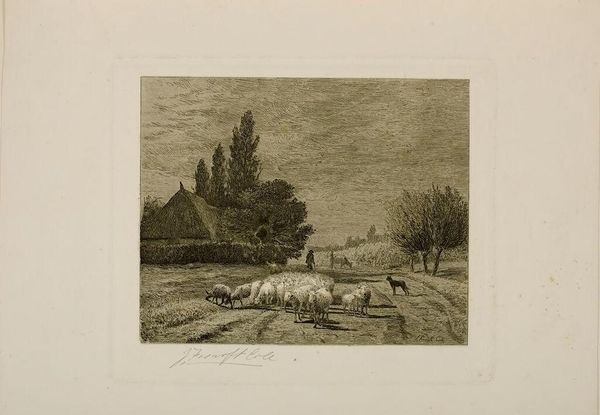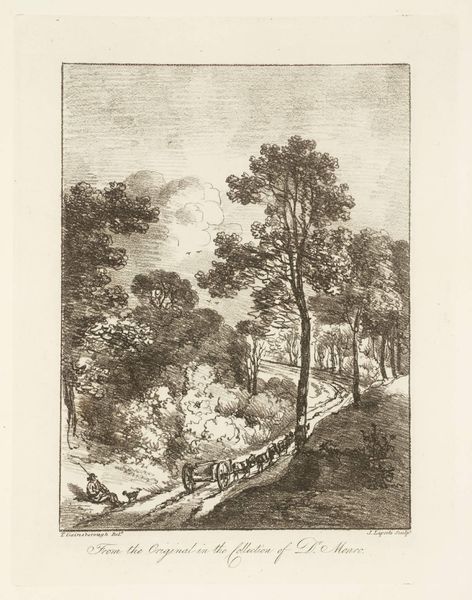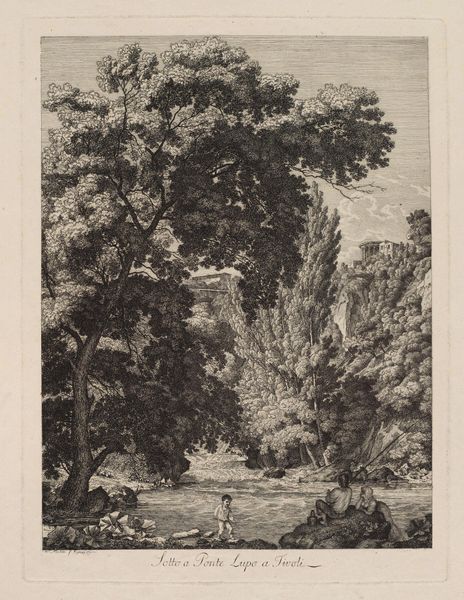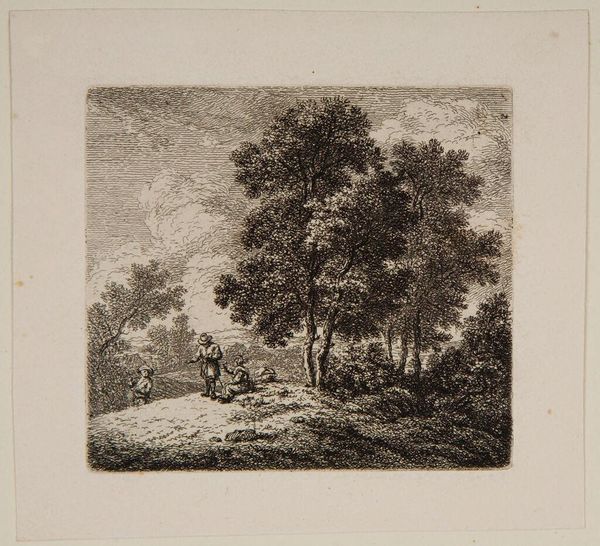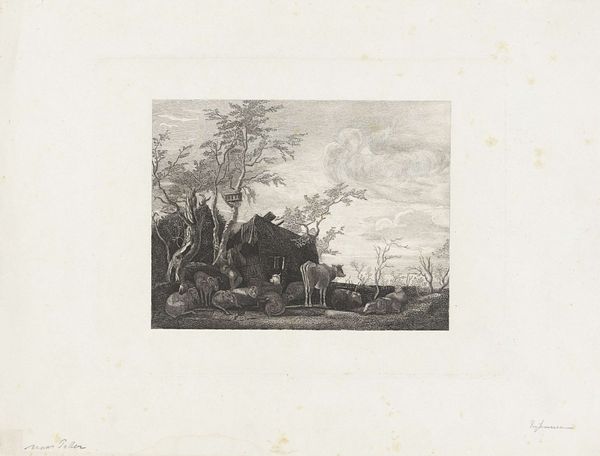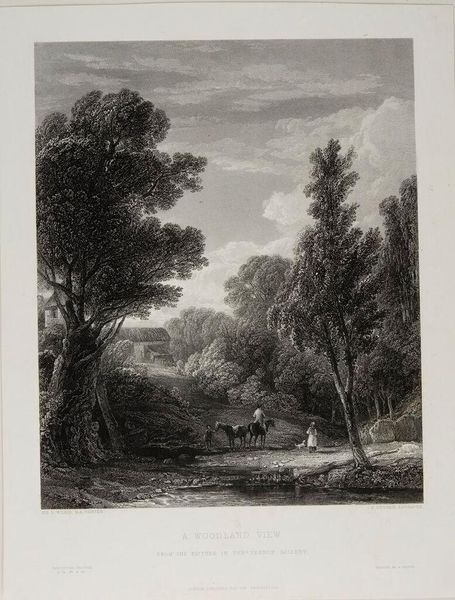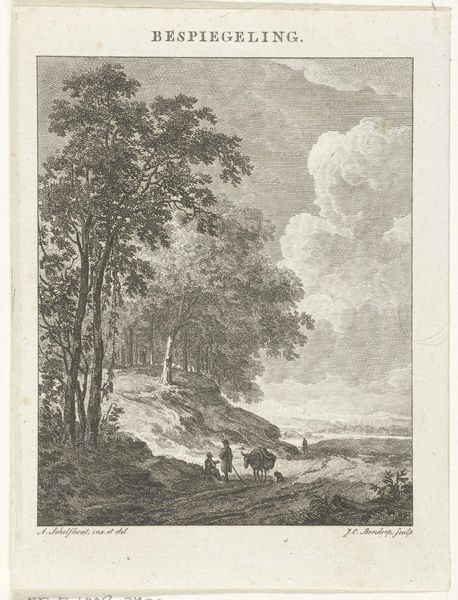
Kinderen in het gras aan de waterkant bij een boerderij 1841 - 1874
0:00
0:00
print, engraving
#
pencil drawn
# print
#
pencil sketch
#
old engraving style
#
landscape
#
figuration
#
pencil drawing
#
line
#
genre-painting
#
northern-renaissance
#
engraving
#
realism
Dimensions: height 289 mm, width 226 mm
Copyright: Rijks Museum: Open Domain
Curator: Welcome. We’re looking at Willem Hendrik Stam’s “Kinderen in het gras aan de waterkant bij een boerderij”, created sometime between 1841 and 1874. It’s a print, an engraving, currently held here at the Rijksmuseum. Editor: My initial impression is one of quiet observation. The detail is exquisite, and it evokes a strong sense of rural peace. A stillness permeates the image. Curator: Absolutely. The print captures an idealized version of agrarian life, fitting into the broader trend of romanticized landscapes in Dutch art during that period. The rise of industrialization likely fuelled a nostalgia for a perceived simpler past. Editor: Notice how Stam uses the children by the water’s edge as a kind of symbol. Are they meant to evoke innocence, perhaps even the natural connection to the land being lost through that industrialization you mention? The water itself often represents change, transition… Curator: That's a perceptive reading. The positioning of the mother watching over them could also be seen as emblematic of protection, safeguarding a traditional way of life. The farmhouse in the background signifies permanence and roots, contrasting perhaps with the transience of modern city life, gaining prevalence at the time. Editor: The animals play a key role as well, I think. Goats often represent fertility, resourcefulness… domesticity too, maybe highlighting an aspect of control and harmony, though goats do tend to symbolism beyond the Dutch visual vernacular... the goats and children, juxtaposed with the working adults, present a multi-layered social tapestry in a singular still moment. Curator: Indeed. What’s also fascinating to consider is how Stam was contributing to and also benefiting from, the growing print market. Reproductions like these made art accessible to a wider public, thereby creating and reinforcing ideas about national identity and the value of Dutch landscapes. Editor: So this print becomes a cultural artifact in its own right! These seemingly idyllic scenes were never just representations but persuasive articulations that spoke to people of a new vision in an era undergoing transformative cultural and political change, I would concur. Thanks, this engraving's context enriches its visual complexity. Curator: My pleasure. The politics of the image here are indeed intriguing to unwrap.
Comments
No comments
Be the first to comment and join the conversation on the ultimate creative platform.
